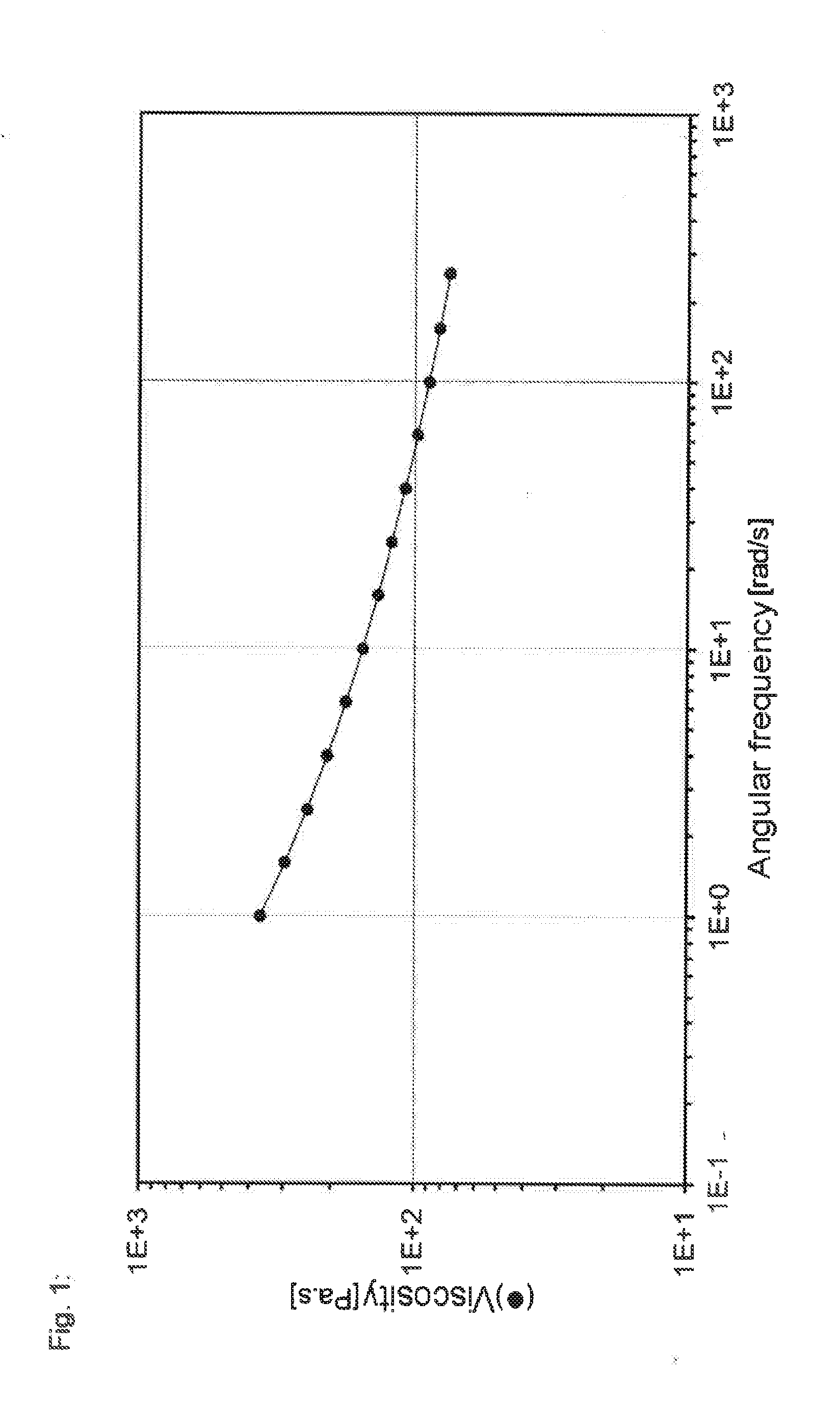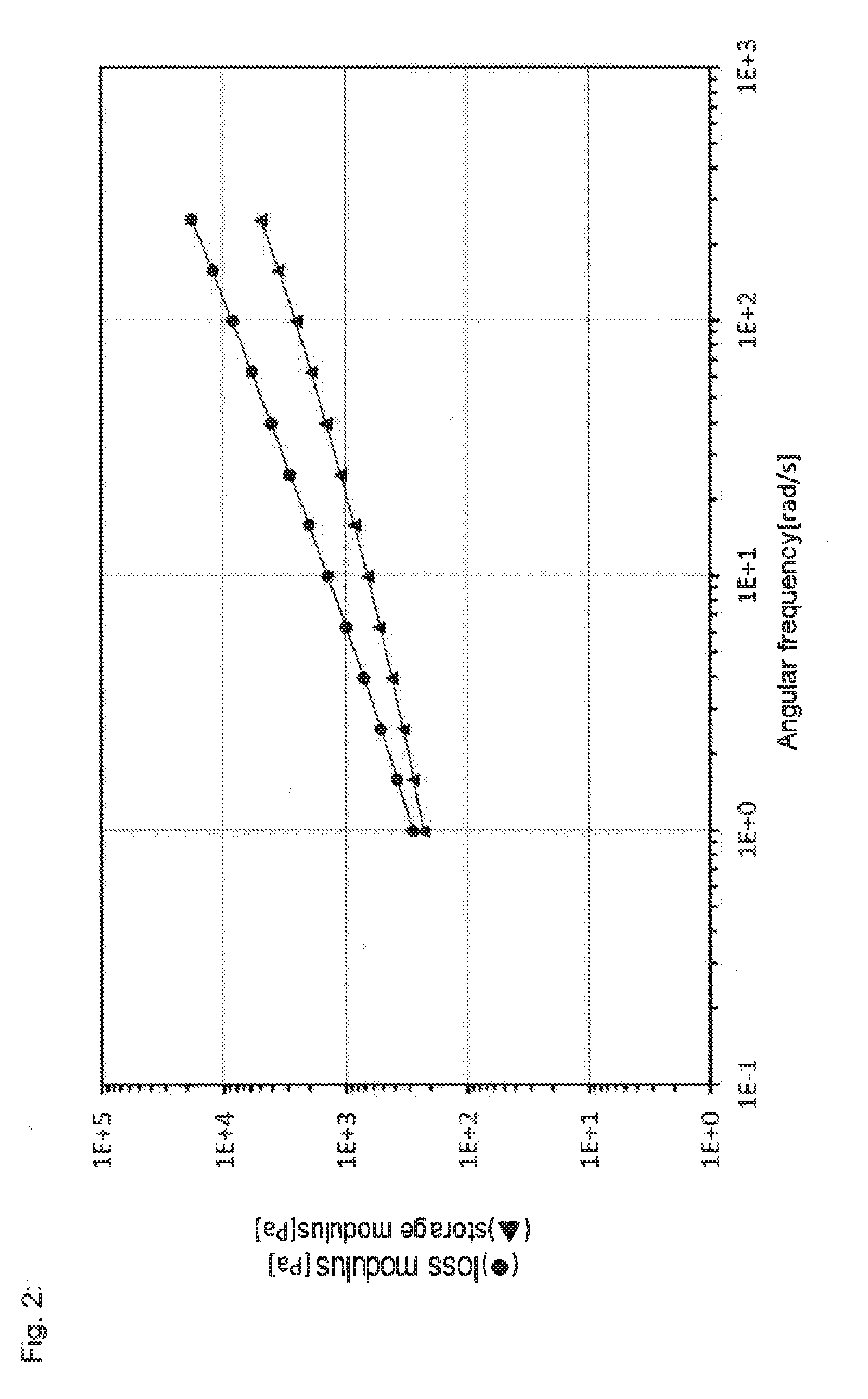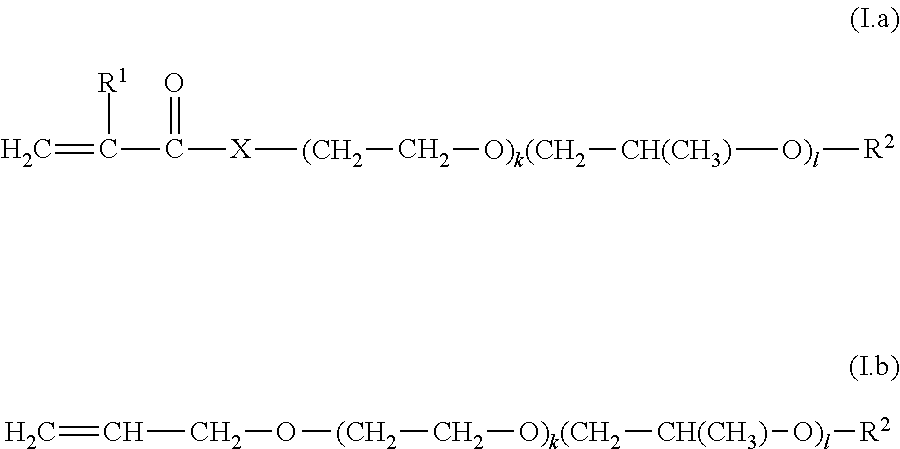Gel-like polymer composition obtained by polymerising a monomer containing acid groups in the presence of a polyether compound
a polyether compound and polymer technology, applied in the field of gel-like polymer composition preparation, can solve the problems of restricting the use of at least one component, not being able to provide transparent gel formulations containing polyether groups, and gels are usually water-insolubl
- Summary
- Abstract
- Description
- Claims
- Application Information
AI Technical Summary
Benefits of technology
Problems solved by technology
Method used
Image
Examples
examples
I) Analysis
I.a) Determination of Water Solubility
[0541]To determine water solubility, 5 g of the particular polymer composition were introduced into a 1 l beaker, and 900 ml of water which had been heated to 40° C. beforehand were added. The mixture was stirred with a magnetic stirrer at 40′C for 20 minutes and the pH was adjusted to 8 with sodium hydroxide solution. Water-soluble polymer gels led to transparent or slightly cloudy solutions.
I.b) Determination of Weight-Average Molecular Weight (Mw):
[0542]The weight-average molecular weight of the polymer was determined by gel permeation chromatography (GPC). For this purpose, the following instruments and chromatography methods were used:[0543]Standard: polyacrylic acid, neutralized[0544]Eluent: 0.08 mol / l Tris, pH 7.0, +0.15 mol / l NaCl+0.01 mol / l NaN3 in deionized water[0545]Flow rate: 0.8 ml / min[0546]Column set: 1 precolumn (l=5 cm), 2 separation columns (l=30 cm each)[0547]Column temperature: 35° C.[0548]Detector: DRI (refractive...
preparation examples
II) Preparation Examples
General Preparation Method
[0554]A glass reactor equipped with three feeds, nitrogen inlet and an anchor stirrer was initially charged with the polyether component (PE) and the solvent (S) in an amount according to table 1, purged with nitrogen for a couple of minutes and heated to 75° C. Subsequently, feeds 1 to 3 were added simultaneously to the initial charge at 75° C. and while stirring at 100 revolutions / minute within 4 hours. Feed 1 comprised monomer (M), feed 2 comprised an initiator (FRI) dissolved in a small amount of solvent (S), and feed 3 comprised the chain transfer agent (CTA) and optionally further solvent After the addition of feeds 1, 2 and 3, the mixture was stirred at 75° C. and at 100 revolutions / minute for a further hour for continued polymerization. Subsequently, the polymer was poured into a beaker and cooled immediately to room temperature. The inventive polymer compositions of examples 1 to 19 were prepared by this general preparation ...
PUM
| Property | Measurement | Unit |
|---|---|---|
| temperature | aaaaa | aaaaa |
| solubility | aaaaa | aaaaa |
| pH | aaaaa | aaaaa |
Abstract
Description
Claims
Application Information
 Login to View More
Login to View More - R&D
- Intellectual Property
- Life Sciences
- Materials
- Tech Scout
- Unparalleled Data Quality
- Higher Quality Content
- 60% Fewer Hallucinations
Browse by: Latest US Patents, China's latest patents, Technical Efficacy Thesaurus, Application Domain, Technology Topic, Popular Technical Reports.
© 2025 PatSnap. All rights reserved.Legal|Privacy policy|Modern Slavery Act Transparency Statement|Sitemap|About US| Contact US: help@patsnap.com



